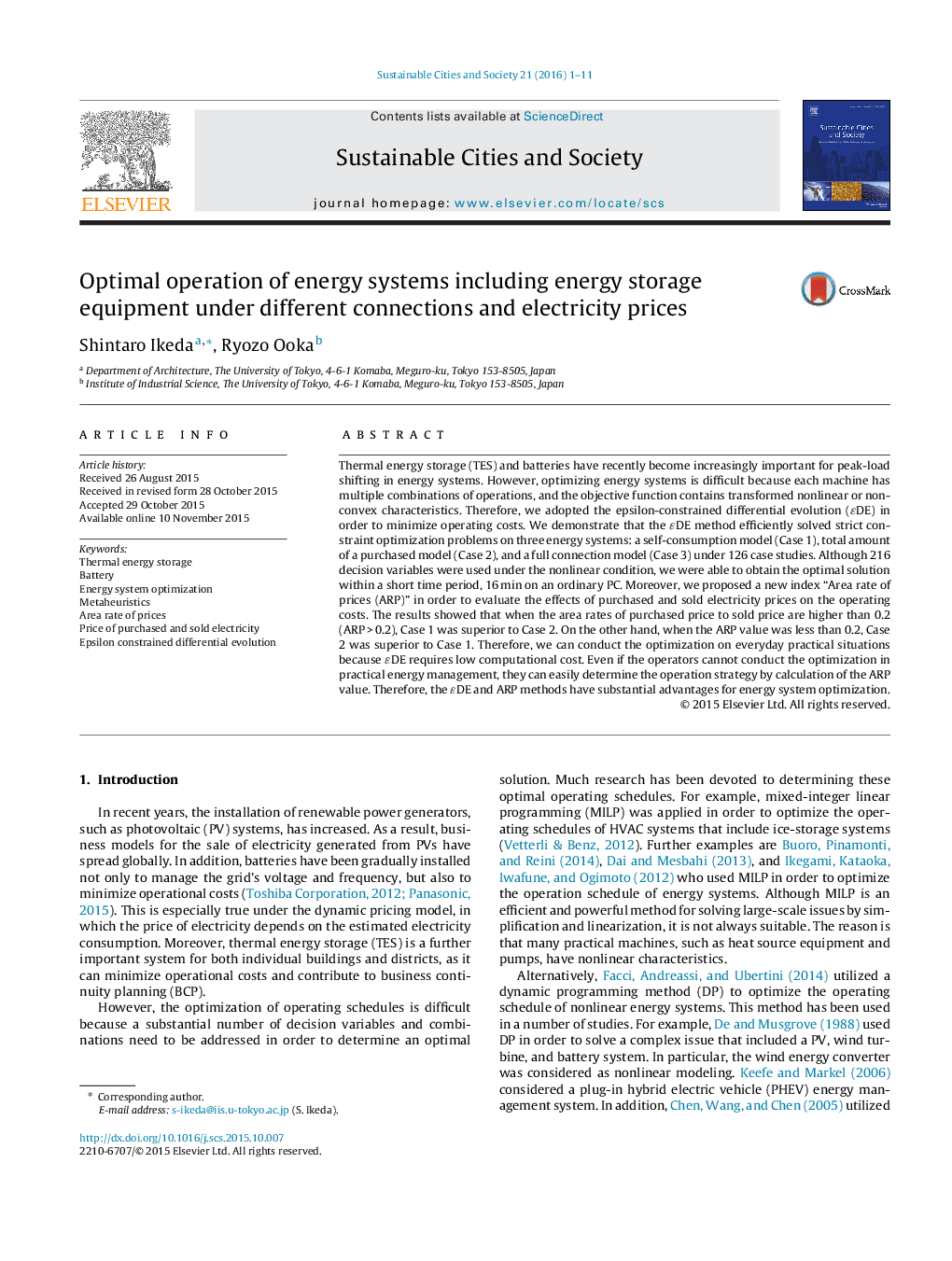| Article ID | Journal | Published Year | Pages | File Type |
|---|---|---|---|---|
| 308076 | Sustainable Cities and Society | 2016 | 11 Pages |
Thermal energy storage (TES) and batteries have recently become increasingly important for peak-load shifting in energy systems. However, optimizing energy systems is difficult because each machine has multiple combinations of operations, and the objective function contains transformed nonlinear or non-convex characteristics. Therefore, we adopted the epsilon-constrained differential evolution (ɛDE) in order to minimize operating costs. We demonstrate that the ɛDE method efficiently solved strict constraint optimization problems on three energy systems: a self-consumption model (Case 1), total amount of a purchased model (Case 2), and a full connection model (Case 3) under 126 case studies. Although 216 decision variables were used under the nonlinear condition, we were able to obtain the optimal solution within a short time period, 16 min on an ordinary PC. Moreover, we proposed a new index “Area rate of prices (ARP)” in order to evaluate the effects of purchased and sold electricity prices on the operating costs. The results showed that when the area rates of purchased price to sold price are higher than 0.2 (ARP > 0.2), Case 1 was superior to Case 2. On the other hand, when the ARP value was less than 0.2, Case 2 was superior to Case 1. Therefore, we can conduct the optimization on everyday practical situations because ɛDE requires low computational cost. Even if the operators cannot conduct the optimization in practical energy management, they can easily determine the operation strategy by calculation of the ARP value. Therefore, the ɛDE and ARP methods have substantial advantages for energy system optimization.
